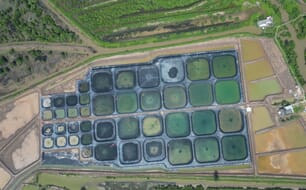Over the past eleven years, there has been huge growth in tilapia farming in the country. Dr Gulam Hussain, former Director General, Bangladesh Fisheries Research Institute and Fish Genetic Specialist for WorldFish, noted that production has increased from about 4000 metric tons in 2002 to 138,000 metric tons in 2012 and it is predicted that it will increase again to 150,000 metric tons at the end of 2015.
Presently, there are about 400 tilapia seed production hatcheries and these hatcheries are producing about 3.5-4.0 billions of monosex/mixedsex seeds every year to support tilapia farming at over 6000 commercial farms in Bangladesh.
Although there is good growth, there are still problems around seed production. Dr Hussain noted that gross anomalies have been observed recently in respect to brood fish management and stock replacement due to the establishment of a huge number of tilapia hatcheries in the country.
As a result, limited numbers and repeated use of brood fish is leading to the problems associated with stock deterioration and inbreeding.
Farmers have reported that in grow-out they are not getting the expected size of fish for market due to the use of inferior quality tilapia seeds from these hatcheries.
In regards to these problems, the genetic deterioration of brood stock and poor hatchery management has been considered as the greatest constraint for quality seed production.
In order to combat the problems with tilapia seed quality, WorldFish, Bangladesh and South Asia, have recently established five 'Tilapia Breeding Nucleus's' (TBN) in the public and private sector hatcheries in greater Npakhali, Barisal, Jessore and Mymensingh regions for the production and dissemination of improved germplasm of tilapia.
Among these five TBNs, said Dr Hussain, two TBNs have been recently established in Jessore region under the USAID funded Feed the Future Aquaculture project.
It is roughly estimated that during the breeding season of 2013 the five TBNs of WorldFish will be able to produce over three million improved germplasm of tilapia, which can be distributed and sold to 80 tilapia hatcheries in the Southern districts of Bangladesh to mostly meet, or partly meet, the demand for improved and high quality tilapia broodstock for quality seed production.
This innovative approach of WorldFish is undoubtedly, a milestone to ensure a large scale production and dissemination of improved germplasm of tilapia for fostering sustainable aquaculture development in Bangladesh.





